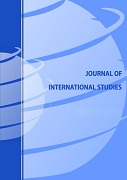VALUE AT RISK ESTIMATION OF THE SET50 INDEX: COMPARISON BETWEEN STOCK EXCHANGE OF THAILAND AND THAILAND FUTURES EXCHANGE
VALUE AT RISK ESTIMATION OF THE SET50 INDEX: COMPARISON BETWEEN STOCK EXCHANGE OF THAILAND AND THAILAND FUTURES EXCHANGE
Author(s): Woradee JongadsayakulSubject(s): Business Economy / Management, Methodology and research technology, Financial Markets
Published by: Fundacja Centrum Badań Socjologicznych
Keywords: value at risk; risk management; volatility; Thailand;
Summary/Abstract: Value at Risk (VaR) is the most widely used measure of risk. This study uses SET50 daily returns from the period from July 3, 2015 to December 27, 2019 to estimate VaR for the assessment of risk exposure at the Stock Exchange of Thailand and Thailand Futures Exchange using the three following methods: non-parametric method with the historical simulation approach, parametric method with GARCH family models, and semi-parametric method with volatility-weight historical simulation of the GARCH family models. Accuracy of the estimated models is also assessed by performing the VaR backtests of unconditional coverage, independence, and conditional coverage. In forecasting VaR with the confidence level of 95%, historical simulation and asymmetric GARCH models (TARCH and EGARCH models) give solid results and outrank volatility weight historical simulation. Moreover, a comparison of stock investments with a correlation to the performance of SET50 Index and SET50 Index Futures investment indicates that SET50 Index Futures investment carries higher risk. Therefore, investment decisions on SET50 Index Futures should be taken more carefully since this market is more volatile than the underlying spot market.
Journal: Journal of International Studies
- Issue Year: 14/2021
- Issue No: 1
- Page Range: 227-240
- Page Count: 14
- Language: English

